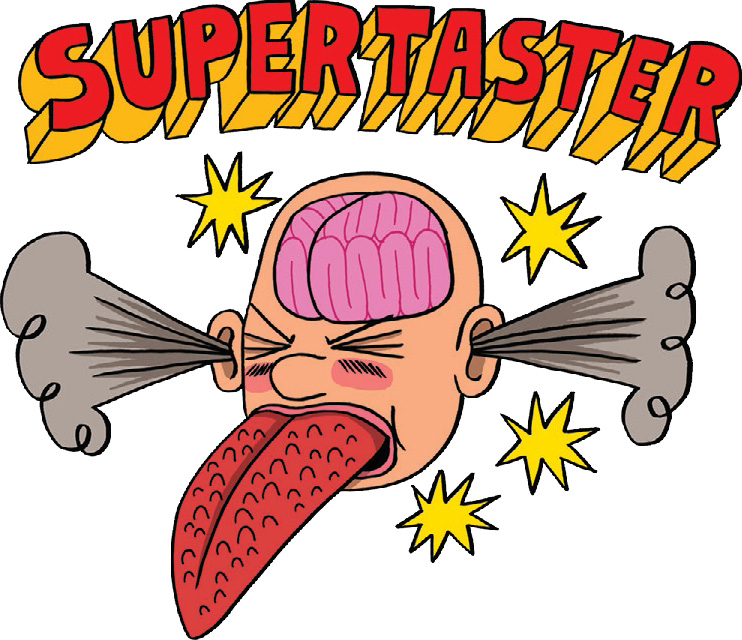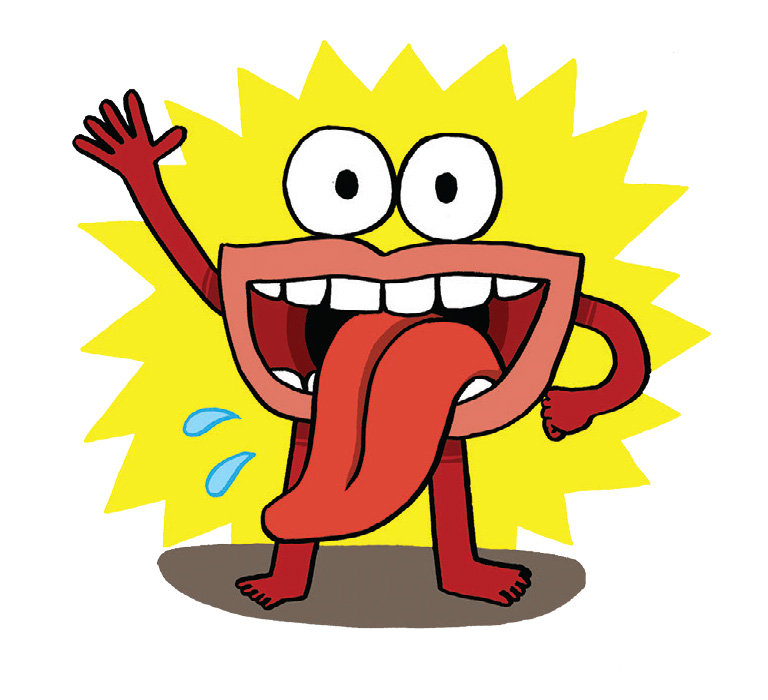

The mouth is defined as “the opening in the lower part of the human face, surrounded by the lips, through which food is taken in and from which speech and other sounds are emitted.”
Wow! That’s a big mouthful of words to swallow. Let’s break it down.
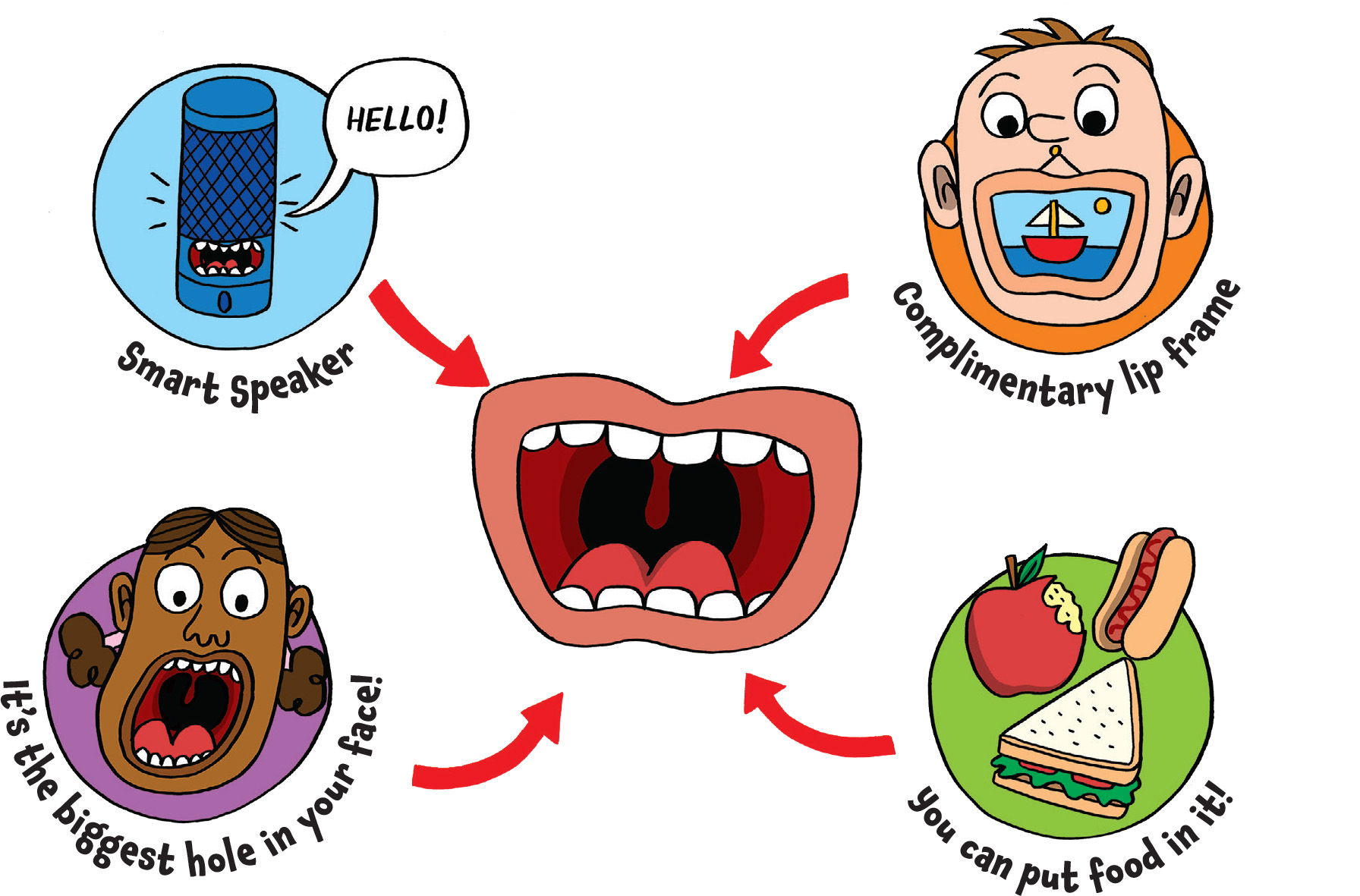
Are you sold? Yay! Let us introduce you to . . . your mouth.
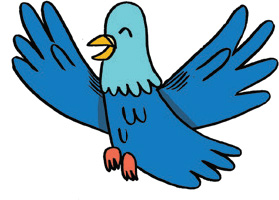
Ah, teeth. The little white picket fences of the mouth. Teeth help us to smile, speak, and most importantly, chew our food. And lucky for us humans, we get two full sets of them in our lifetimes.
Kids start off with twenty “milk” teeth, also known as baby teeth. They’re tiny, shiny, and white and first pop through our gums at around six months old, causing our grownups to notify relatives, alert the local news, and shriek with delight.
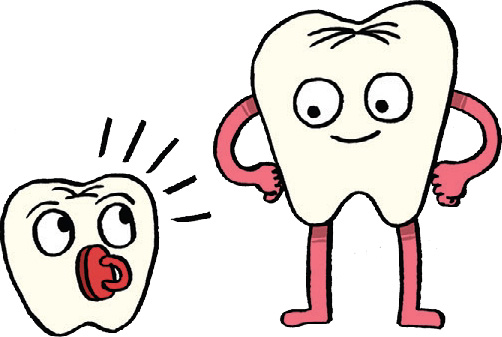
But those baby teeth won’t be around for long. In fact, by the time we’re seven or eight years old, those teeth start jumping out of our mouths to make way for a new set of chompers to come barreling through our gums. These are your adult teeth. All thirty-two of them are bigger, yellower, harder, and here to stay. These adult teeth can tear apart a T-bone steak, gnaw their way through a tough piece of asparagus, and rip a price tag off a new shirt (even though that is not what they are made for). Let’s take a moment to get to know our teeth. Open wide!

I like my baby teeth. Why do I have to “lose” them?

Losing our baby teeth is just another part of growing up! As babies and kids, our mouths are just not big enough for thirty-two adult-size teeth, so our baby teeth serve as little placeholders until our mouths grow big enough for the big dogs to erupt.

So then why do I need adult teeth at all? Why can’t I just keep my baby teeth in my mouth forever?

Why?! Because it would look something like this: 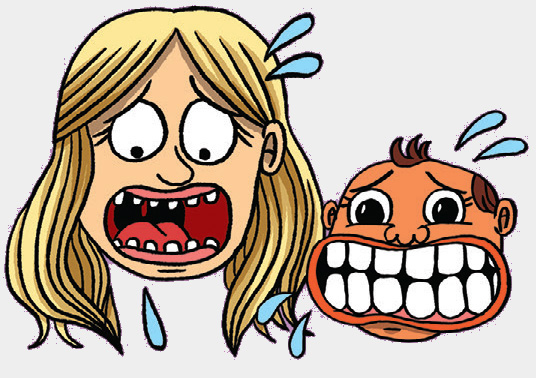

AHHHHHHHHHHHHHHHHHHHHHHHHHHHHHHHHH!!!

You get it now?

AAHHHHHHHHHHHHHHHHHHHHHHHHHHHHHHHHH!!

Your mouth is home to three different types of teeth: incisors, canines, and molars. Each of these teeth has a different job to do, and unless you are one of those people who enjoys eating in front of a mirror while chewing with your mouth open (hey, we’re not here to judge!), you might be living with these teeth and not even realizing what they’re doing for you at every meal.
Incisors These are the attention-grabbing teeth at the front of your mouth. They are smooth on the bottom, but sharp enough to cut through a carrot in a single bite. And you get eight of them!
Canines These are those little fang teeth that sit in the corners of your mouth. They are sharp, pointy, and good for gripping food and tearing it to shreds. Pay attention to your canine teeth the next time you eat some overcooked chicken or the tough end of a green bean. Those four canines will show your food who’s boss!

Molars These are the teeth found in the back of your mouth that look like three or four teeth in one. Compared to the showstoppers sitting pretty in the front of your mouth, these babies are big. They’re also super reliable. Your molars help to chew, crush, and grind your food. Without molars, eating would feel super weird. If you don’t believe us, try chewing an apple using only your incisors and canines.
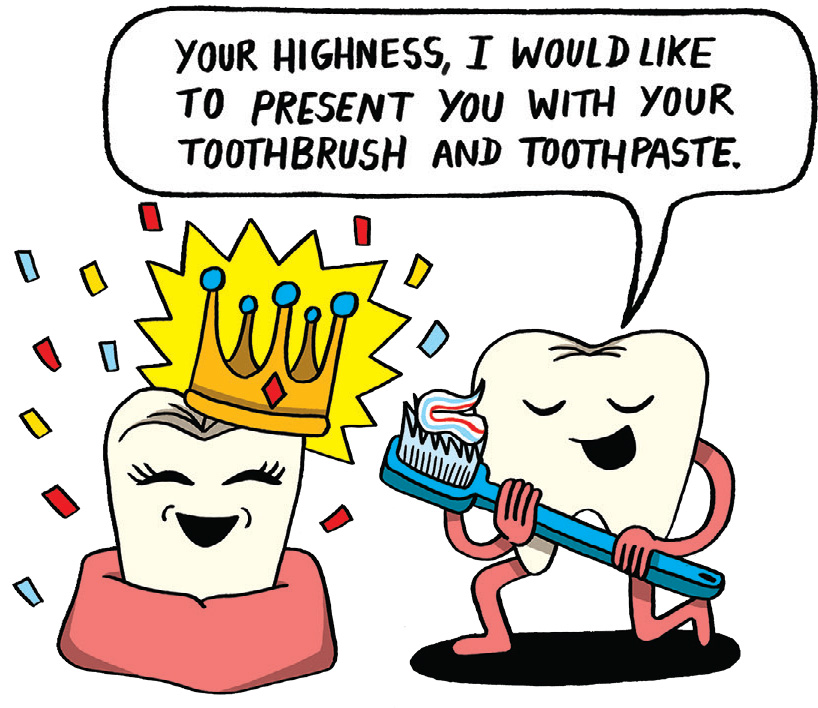
The part of the tooth that you can see is called the crown. The crown is covered in a shiny coating called enamel. Enamel, made mostly out of minerals, is the hardest substance in the whole human body. And since it does not contain any living cells, your body can’t make any more of it. So when it comes to your teeth, it’s best to treat your crowns like royalty!
Most mammals (including humans) have two sets of teeth throughout our lifetime. Because of this, we are known as “diphyodont.”
Alligators will regrow teeth in the same tooth socket up to fifty times in a lifetime. (Alligators have terrible oral hygiene!)
Some animals—like sharks, crocs, elephants, and kangaroos—lose and grow teeth over and over again throughout their lives. Because of this, these animals are known as “polyphyodont.”
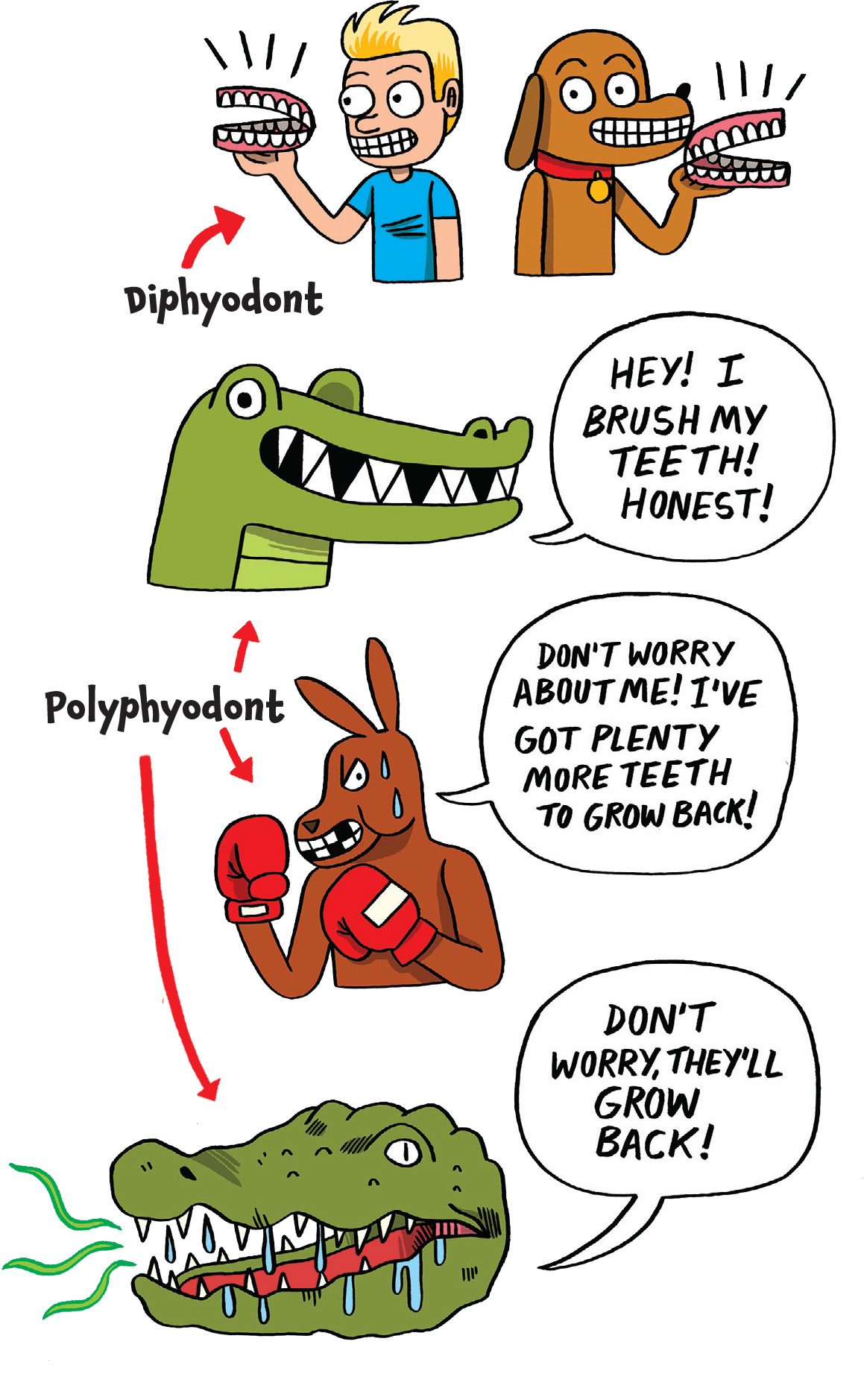

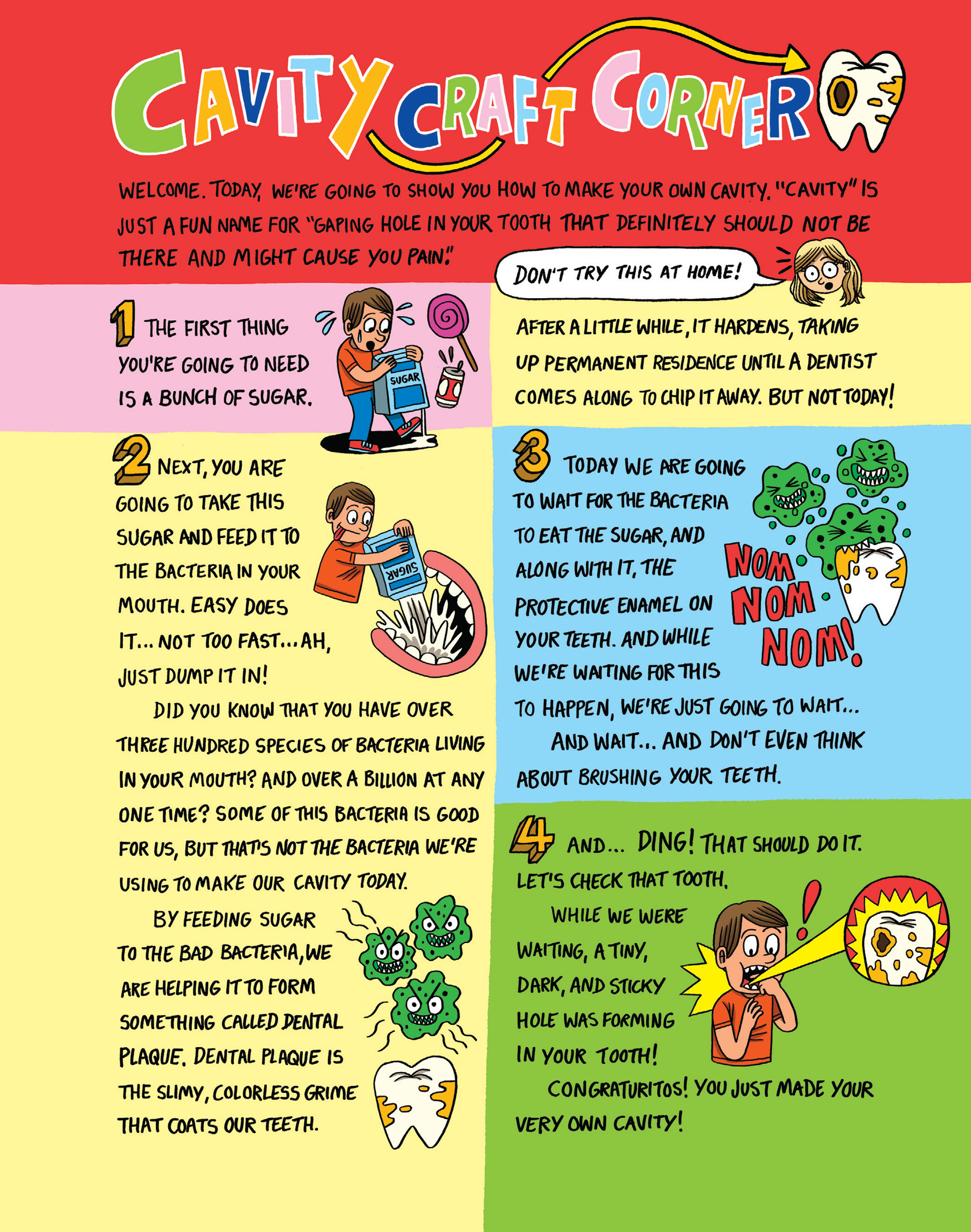
Just like fingerprints, no two teeth are exactly alike.
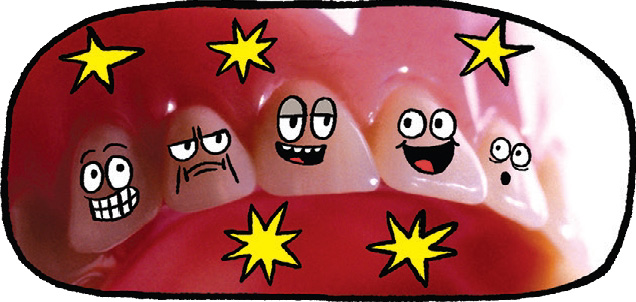
About a third of each tooth lives under your gum. Take good care of your gums and your gums will take good care of your teeth.
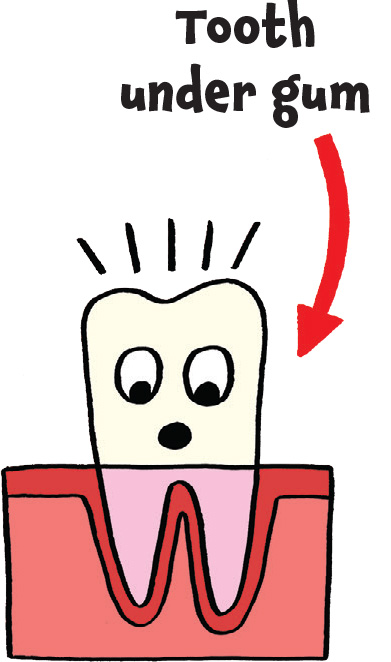
Your body makes almost 7,000 gallons (26,280 L) of spit over a lifetime. That’s enough spit to fill two bathtubs a year! Spit bath, anyone?
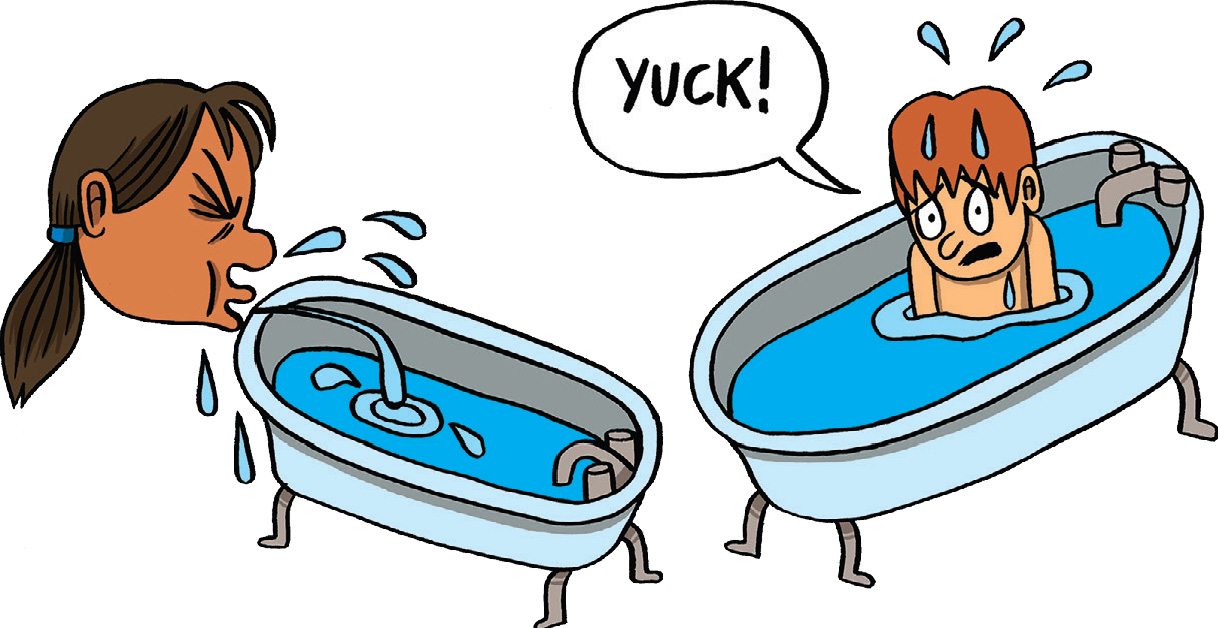
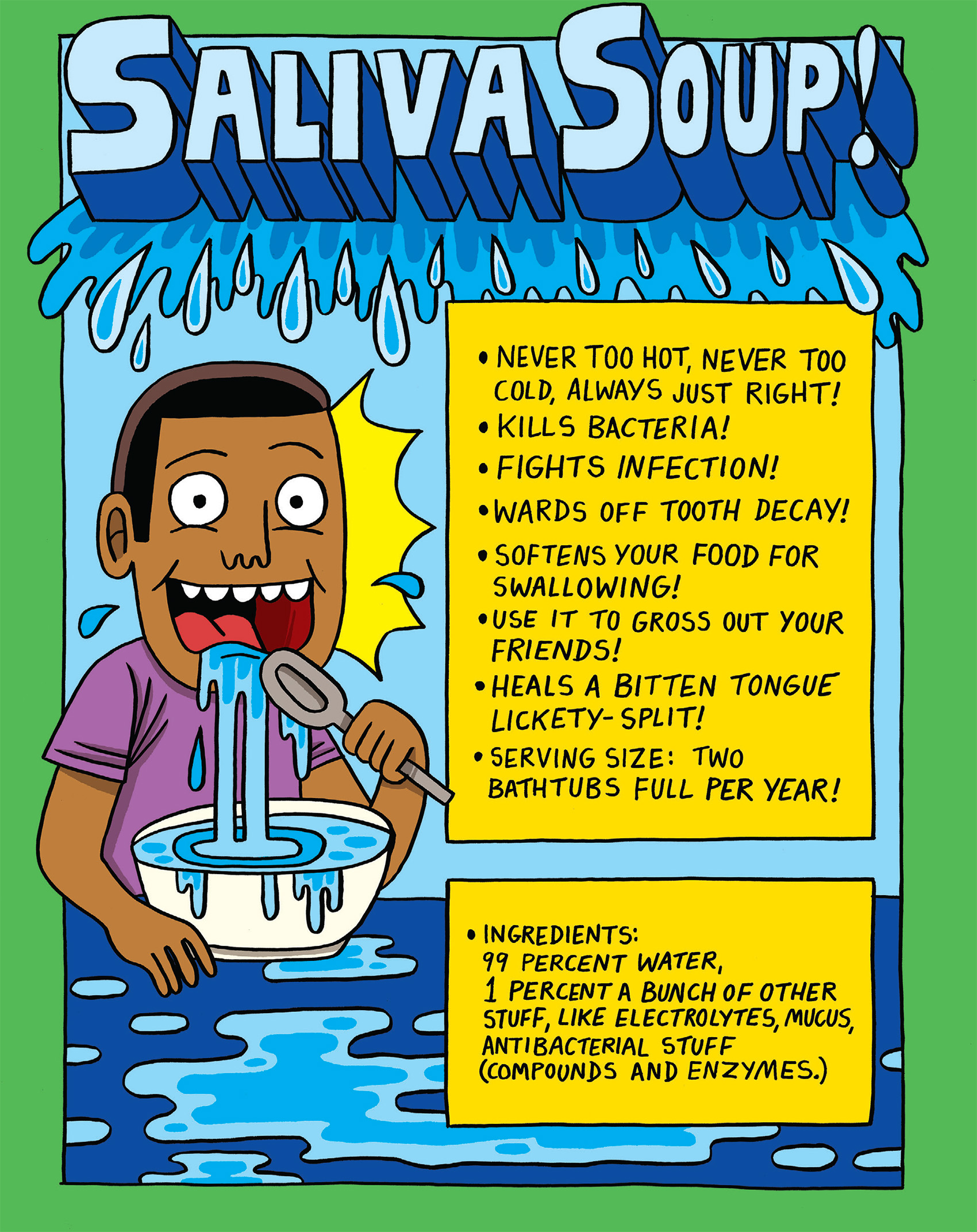

The tongue is a muscular organ in the mouth that helps us to chew, swallow, taste, and speak. (Thanks, tongue!) Most tongues are about three inches (7.6 cm) long and covered in a thin layer of moist, pink tissue called mucosa, tiny bumps called papillae, and of course, our taste buds.

Taco tongue
Tongue rolling, or taco tongue, is at least partially genetic. If one of your parents can do it, there’s a pretty good chance that you can too. Try it and see for yourself.
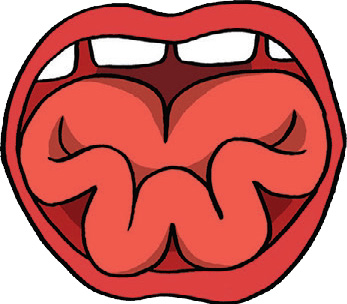
Four-leaf clover
Considered to be the trickiest type of tongue twisting, the four-leaf clover is formed when a person is able to fold their tongue into multiple bends that resemble a four-leaf clover.
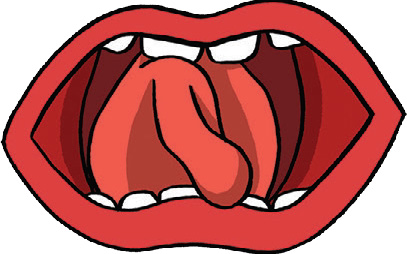
Tongue turning
This tricky tongue technique is accomplished by twisting the edges of the tongue to face sideways.
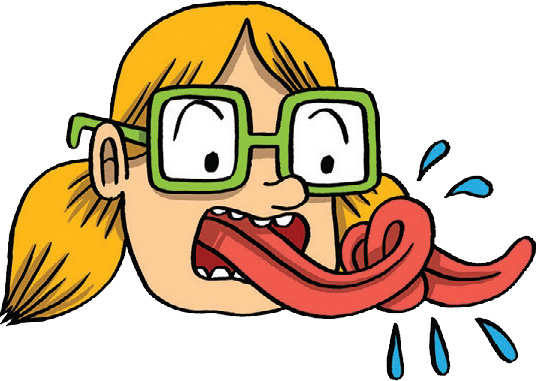
“Pad kid poured curd pulled cold”
In 2013, researchers from the Massachusetts Institute of Technology named this the world’s toughest tongue twister!
Only 10 percent of people worldwide can touch their nose with their tongue! Are you one of them?
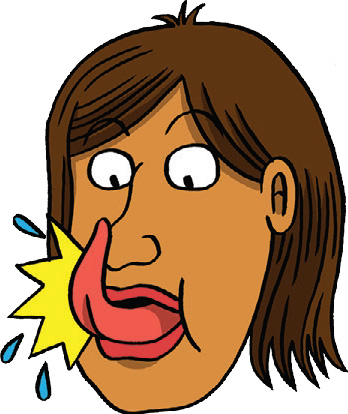
For centuries, the people of Tibet have greeted one another by sticking out their tongues.
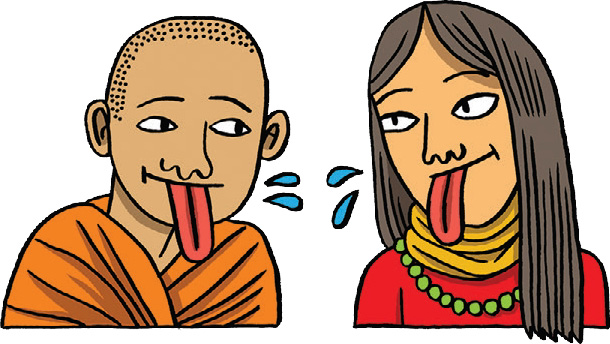
Just like fingerprints, no two tongues are alike.
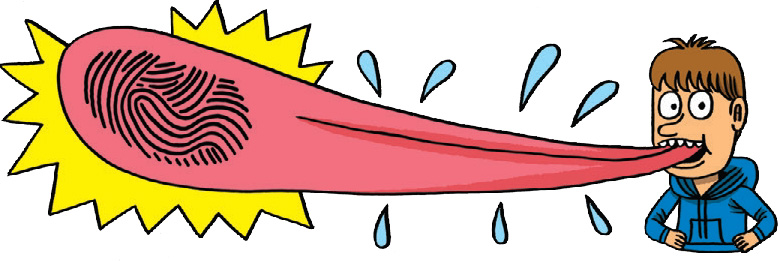
Ah, taste buds. Or should we call them taste buddies? Always there for us through not only the sweet and savory times but the sour and bitter times too. Birthday cakes, french fries, lemon drops, and onion cries, our taste buds are there to help determine how we feel about the foods we eat.

So what are taste buds, anyway? Find a mirror and stick out your tongue. See those little Tongue bumps? Those bumps are called papillae. Most of those papillae bumps contain tiny taste buds covered in even tinier hairs called microvilli (my-kro-VILL-eye). And like a personal postal service, those teeny-tiny hairs are responsible for sending messages to your brain to tell you how something tastes.
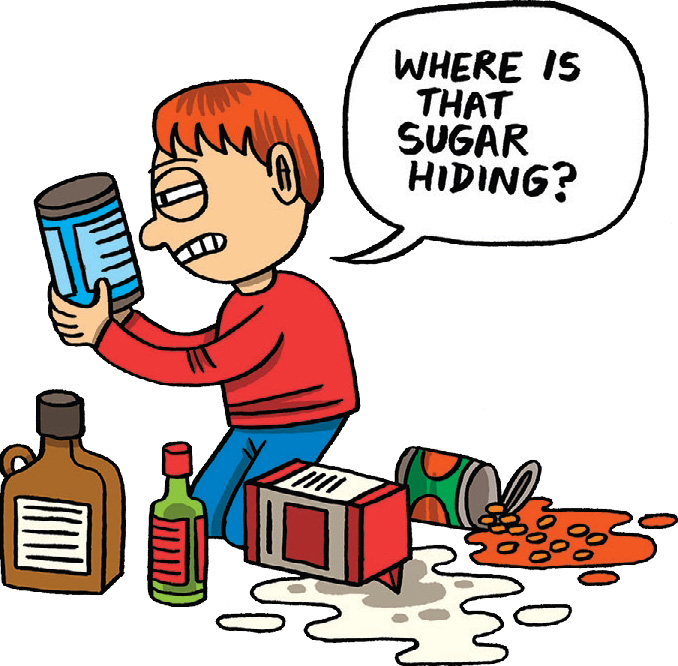
Sweet tastes are mostly caused by something you’re probably not at all familiar with, a food substance commonly known as sugar. (What? You’ve heard of it?!) Sugar is found in everything from fruit, maple syrup, and honey to chocolate cake, candy, and even baked beans. In fact, sugar seems to have worked its way into more foods than we even realize: bread, salad dressing, barbecue sauce, peanut butter, and spaghetti sauce all often contain that sneaky sugar.
Sour tastes are caused by acid. You may recognize these sour-tasting acids in lemons, vinegar, and fermented foods like sauerkraut. But what does sour taste like? Well, we could tell you, but we’d rather show you. Try licking a sour fruit like a lemon while you look at your reflection in a mirror. If the taste causes you to make a face by scrunching up your mouth and squinting your eyes, you’ll know you’ve experienced a serious sour sensation.
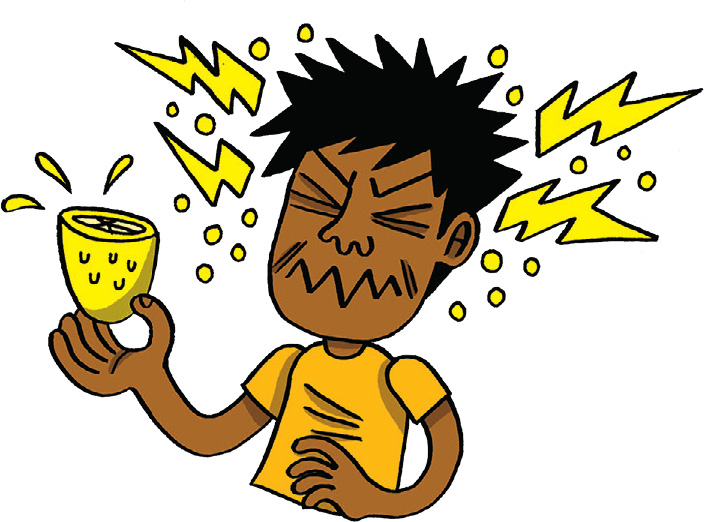
Bitter tastes have a sharp, powerful bite that might take a little getting used to. Uncooked kale, brussels sprouts, and pure chocolate/cocoa are all examples of crazy-bitter foods. We taste bitter flavors near the backs of our tongues more intensely. Scientists believe that our ancestors used this trait to help avoid bitter plants, which could be a sign that they were poisonous or rotten. Today, we humans sometimes still feel the urge to spit out foods that taste extra bitter to us.
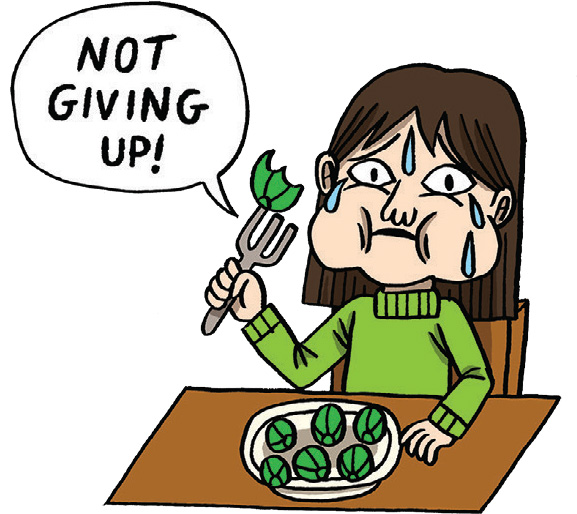
Salty tastes . . . salty! That saltiness comes from a chemical called sodium chloride. (Please pass the sodium chloride!)

Umami, or as we say it, “OoOOoooOOOh MOMMYYY” (ahem!), is a type of savory taste sensation found in many Asian foods. You may recognize it in foods like seaweed, soy sauce, and Chinese cabbage. Other examples of umami can be found in cured meats, stinky cheeses, mushrooms, and broths. In Japanese, umami means “pleasant savory taste.”
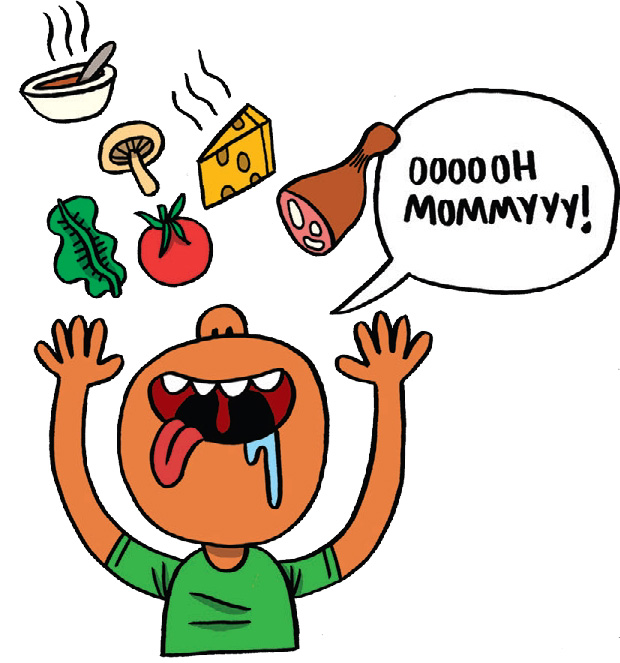

“Spicy” is actually not a flavor at all. In fact, your body detects the spiciness of hot peppers in the same way it detects the heat from a sip of hot cocoa.
Spicy foods like hot peppers are filled with a teeny-tiny molecule called capsaicin. Pain receptors on your lips, mouth, and tongue are tricked by the capsaicin and send heat signals to your brain.
(Attention, Mission Control: it appears that we are about to be SPICED OUT.)
Here’s how it works:
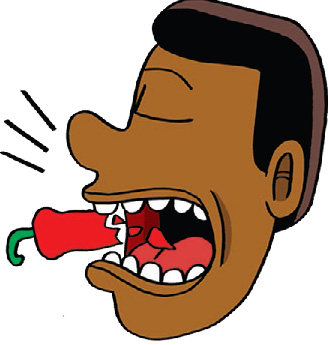
Step 1: You confidently and unwittingly take a bite of a hot pepper.
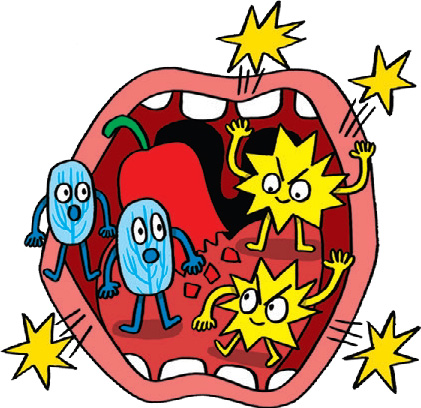
Step 2: Pain receptors on your lips, mouth, and tongue are all greeted by the capsaicin hiding inside the pepper.

Step 3: The pain receptors send emergency signals to your brain that say, “We have been spiced out!”
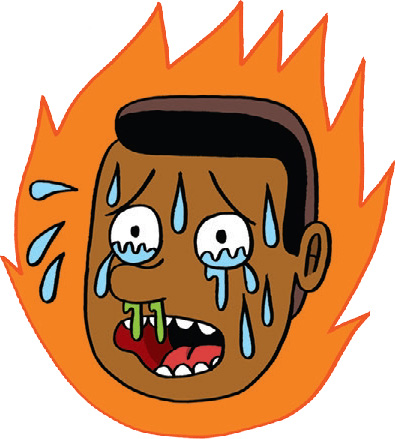
Step 4: The rest of your body comes to the rescue in embarrassing ways in an attempt to cool you down and chill you out. This can involve excessive sweating, a runny nose, and watery eyes. Or in extreme cases, all three!
Are you a human person who tastes flavors way more intensely than your friends? Do you find desserts too sweet and veggies too bitter to bite? Are you easily spiced out?
If you answered yes to these three questions, you might be . . . a SUPERTASTER. Supertasters have more taste buds than the average human and something going on in their brains that even scientists still don’t fully understand.
Linda Bartoshuk at the University of Florida accidentally discovered supertasters back in the 1990s while studying something called taste blindness. Taste blindness happens when a person goes “blind” to certain flavors. Bartoshuk was comparing whether taste-blind people could taste a bitter flavor as intensely as typical tasters, but found that a third of the people in her experiment tasted bitterness a lot more than others.
